They included the gloriously named Humgumption; or, Dr.Frankenstein and the Hobgoblin of Hoxton
(1823), Frank-in-Steam; or, The Modern Promise to Pay (1824), and Another Piece of Presumption (1823) in which Peake
delivered a burlesque on his own play - one of the first light-hearted
treatments of what was to become a cultural icon, and anticipating
subsequent humorous explorations of the ‘myth’, such as Mel Brooks’s 1974
film Young Frankenstein, a comedy which itself pays homage to
Universal Studios’ Frankenstein films of the 1930s.
When Mary Shelley gave literary life to her now infamous Dr Frankenstein
and his progeny-cum-doppelgänger, she surely could not have imagined that
her text would take on a life of its own, its offspring during the
following 200 years being assembled from a miscellany of bits and parts
much like the creature itself. Recently widowed, financially insecure, a
single mother, in August 1823 Shelley returned to England hoping for
support from her in-laws, only to find that success came from unexpected
quarters. On 24 August, she wrote to Leigh Hunt, ‘But lo & behold! I
found myself famous! - Frankenstein had prodigious success as a
drama & was about to be repeated for the 23rd night at the English
opera house’.
[1]
The wellspring of dramatic, cinematic and balletic adaptions has seemed
infinitely fertile. The first silent screen adaptation came in 1910; James
Whale’s 1931 film, which was based on Peggy Webling’s stage version,
spawned a ‘Bride of’ and ‘Son of’, cementing the image of Boris Karloff’s
creature in the cultural consciousness. The title of Kenneth Branagh’s 1994
film, Mary Shelley’s Frankenstein, attests to its wish to honour
its source with veracity; The Rocky Horror Show gave us the
transvestite Dr Frank N. Furter. Nick Dear’s version for the National
Theatre (2011) alternated Benedict Cumberbatch and Jonny Lee Miller in the
roles of creator and created. A female Frankenstein trod the boards in
Greyscale and Northern Stage’s 2017 production of Selma Dimitrijevic’s
variant on Shelley’s novel, as one Victoria Frankenstein overcame
restrictions upon women’s study of science in England by travelling to
Bavaria to study chemistry and cadavers. With Doo-Cot Theatre’s Frankenstein - the Final l, which features ‘an 8-foot
animated creature [with] live digital imagery and projection, a
specially-composed soundtrack and choreography’, Frankenstein
firmly entered the technological age.
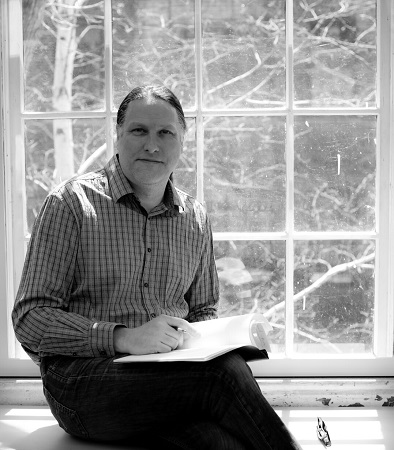 Mark Grey. Photo credit: Stella Olivier.
Mark Grey. Photo credit: Stella Olivier.
The novel and our response to it have evolved in time, as we develop our
own narratives in relation to the original text, explains composer Mark
Grey, whose new opera Frankenstein will premiere at
La Monnaie
in Brussels from 8 - 20 March 2019, directed by Àlex Ollé ( La Fura dels Baus) and conducted by Bassem Akiki.
Shelley’s text, which incorporates contemporary scientific developments
such as galvanism and vitalism, is often viewed as a cautionary tale of
over-reaching technological endeavour and the failure of science to
regulate itself. But the novel’s social and cultural implications are much
more complex. Indeed, in conversation with Mark, I suggest that the
challenge of creating an opera from a text which bursts and bristles with
such wide-ranging themes and debates - the questing Romantic hero,
scientific experimentation, social democracy versus the fear of the
inchoate revolutionary mob, the innocence of childhood, Gothic horror and
terror, patriarchal oppression, male fear of female fertility and
procreative power, the blasphemous usurpation of God’s role and the
penalties for violating Nature - is a daunting one.
Very aware of the potential traps that are lying in wait for the composer
who attempts to adapt a literary text for the operatic stage, Mark explains
that the opera that he and his librettist Júlia
Canosa i Serra have created does not - indeed, given the complexity of its
narrative structure, cannot - tell the novel verbatim. Rather than looking
back he has looked forwards, pulling the novel from its literary past and
propelling it several centuries into the future. He has aimed both to
respect Shelley’s text, and its place in history, and to create a work
which is expressive of the day in which we live. After all, he remarks,
Shelley’s own novel melded voices and echoes from various texts - Paradise Lost, ‘The Ancient Mariner’, the Prometheus myth - inside
a new literary “umbrella”.
Grey describes his aim to make a “visceral connection” with what Mary
Shelley was experiencing at the time that she wrote her novel: guilt for
the death of her mother, Mary Wollstonecraft, the vehement advocate for
women’s rights who died eleven days after the death of her second daughter;
and for the death of her own premature infant; and remorse at not having
been more attentive to her half-sister Fanny, whose depression led her to
commit suicide.
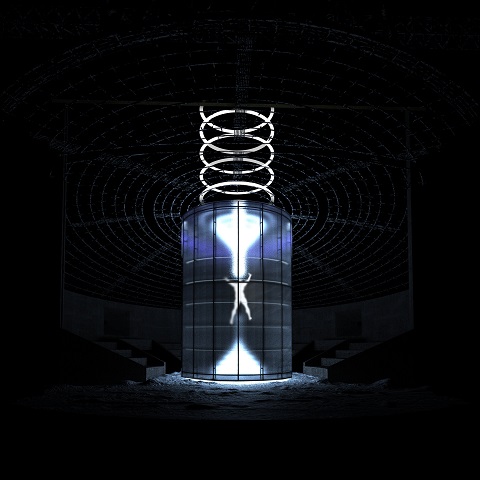 Photo credit: Alfons Flores (La Fura dels Baus).
Photo credit: Alfons Flores (La Fura dels Baus).
I suggest to Mark that this theme - death as an ever-present companion to
birth - seems to me to be the heart of the novel. Victor Frankenstein, too,
is motherless; what he calls the ‘first misfortune’ of his life, when he
mother dies having caught scarlet fever from his cousin Elizabeth, is both
the birth of his awareness of the potential of modern science, and ‘an
omen, as it were, of my future misery’. Victor comes to fear that, should
their union be consummated, his beloved Elizabeth will become pregnant and
die. Indeed, the dream which Victor has just after bringing his creature to
life is telling: ‘I thought I saw Elizabeth, in the bloom of health,
walking in the streets of Ingolstadt. Delighted and surprised, I embraced
her, but as I imprinted the first kiss on her lips, they became livid with
the hue of death; her features appeared to change, and I thought that I
held the corpse of my dead mother in my arms; a shroud enveloped her form,
and I saw the grave-worms crawling in the folds of the flannel.’ One is put
in mind of a dream that Shelley recorded in her journal on 19 March 1815,
shortly after the death of her first child: ‘Dream that my little baby came
to life again - that it had only been cold and that we rubbed it before the
fire & it lived.’
Mark suggests that patriarchal dominance, too, is also a covert element
within Shelley’s story, as well as her ‘difficult’ relationship with her
father, William Godwin. Indeed, in the introduction to her novel she notes
the Percy Bysshe Shelley was, ‘from the first very anxious that I
should prove myself worthy of my parentage’, and years later she recorded
in her journal, ‘I was nursed and fed with a love of glory. To be something
great and good was the precept given me by my father: Shelley reiterated
it’.
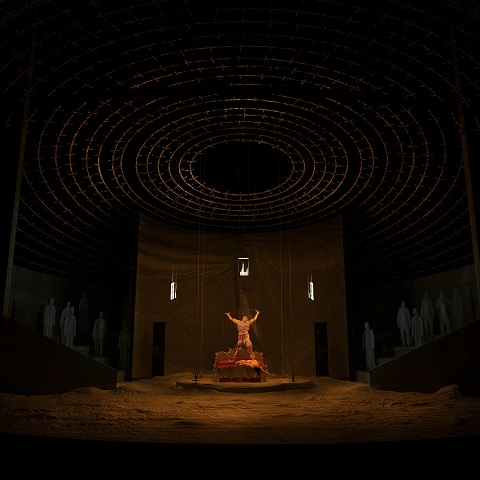 . Photo credit: Alfons Flores (La Fura dels Baus).
. Photo credit: Alfons Flores (La Fura dels Baus).
But, many early versions, particularly the Hollywood accounts of the
narrative which stamped the powerful visual imagery of Boris Karloff’s
creature on our collective consciousness, have in Mark’s words, “stripped
out” the tale - whether motivated by the need to entertain, or by time
constraints - and it is the desire to retrieve some of what has been “lost”
that has influenced Mark’s and Júlia Canosa i Serra’s approach. I wonder
whether the narrative structure - a Chinese-box form, with its framing
letters from Robert Walton, who meets Victor on the frozen expanse of the
Arctic as the latter quests for a vengeful reunion with his creature; the
creature’s first-person retrospective account; and sundry inter-woven
letters and diary entries - is a prohibitively complicated basis for an
opera libretto. Mark is quick to agree - after all, who knows whether
Walton hasn’t gone crazy too! - but he explains that he and Canosa i Serra
have “unravelled the onion” of the narrative, and given priority to the
creature’s narrated memories of its ‘birth’, development,
acquisition of language, and of its rejection by those human beings that it
encounters, to create a subjective flashback.
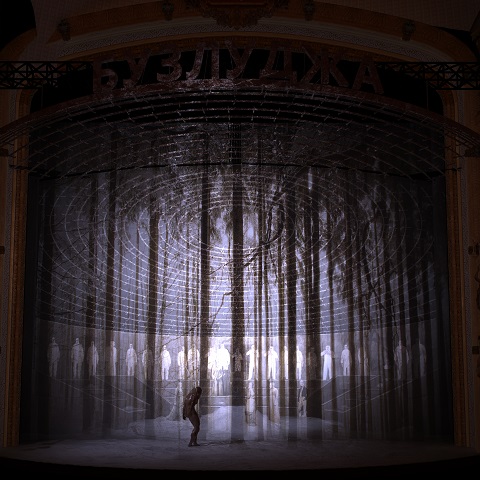 . Photo credit: Alfons Flores (La Fura dels Baus).
. Photo credit: Alfons Flores (La Fura dels Baus).
It’s a flashback that is set in the future. Mark reminds me that Walton is
the only person other than Victor to see the creature as it heads towards
its professed funeral pyre at the North Pole. In Mark’s opera, a team of
scientists, re-enacting Walton’s quest, so to speak, find the preserved
form of the creature in the granite blocks of ice, and re-animate it. The
story thus begins with remembrance of the past.
So much of our response to the creature depends on the rhetorical power of
its appeals to its ‘maker’, I suggest: it is less ‘monster’ and more
‘poet’? Does Mark’s musical language attempt to guide us towards a
sympathetic, even empathetic response to the creature? Mark’s interest in
issues of social justice has been informative here, leading him to
emphasise Shelley’s criticism of the social injustices and prejudices of
her day. They are, after all, our own, Mark points out: we only have to
look at the situation in the US today (and in the UK and Europe, I add),
where racial concerns about the ‘Other’ are feeding oppression, suffering
and violence. His opera retains the ‘blind man’ of the original: the father
of the De Lacey children whose close family bonds, despite their poverty,
teach the creature values of kinship, community and compassion. Unaware of
the creature’s physical appearance, the blind man appreciates the
creature’s care and articulacy, in contrast to even the ‘innocent’ children
- like William, Victor’s younger brother - who recoil at its physical
‘ugliness’, which they associate with evil and menace. One thinks of the
Syrian refugees trying to relocate into Europe, Mark says, and the way the
‘outcast’ is such a powerful emblem of social prejudice and injustice
today.
In addition to his extensive work as a composer - which has included world
premieres at famous concert halls including Carnegie Hall and The Walt
Disney Concert Hall, and commissions by prestigious organisations including
the Los Angeles Philharmonic and the Atlanta Symphony Orchestra - Mark is
also an Emmy award-winning sound designer, having collaborated with
composer John Adams and others for over three decades. In 2002 he pioneered
the way as the first sound designer in history to design for the New York
Philharmonic at Avery Fishery Hall; and, Mark was the artistic collaborator
and sound designer for On the Transmigration of Souls by John
Adams, which commemorated the lives lost in the World Trade Centre Attack
on September 11, and for which Adams won a Pulitzer Prize.
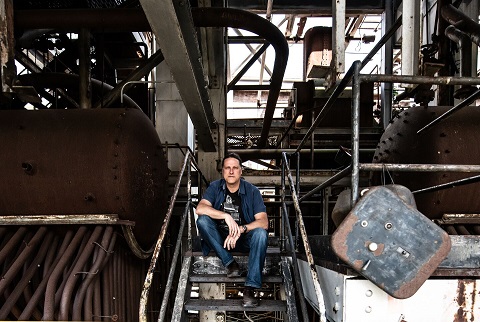 Mark Grey. Photo credit: Stella Olivier.
Mark Grey. Photo credit: Stella Olivier.
Mark sees technology as a way to both draw out the fantastical elements of
Shelley’s story, and to make it more ‘believable’. After all, what is
‘reality’ today, he asks? We have AI, robotics, drones that fly themselves
and are fighting wars. I guess that I am one of the ‘academics’ whom he
describes, with their head and pens down! But, Mark’s ideas about how one
might find a way to express the contemporary “balance between creator and
created”, something which is perhaps “unknown”, are engaging and
intriguing.
As Mark explains, the creature begins life like a child - one rejected by
its ‘parent’, who recoils from a gaze which reflects his ‘self’: Victor
cringes when ‘his eyes, if eyes they may be called, were fixed on me’. The
creature grabs Victor’s notes and begins to assemble words into language,
and to comprehend through reading, that he is ‘other’ and ‘outcast’. Mark’s
music seeks to communicate this process: initially the vocal writing for
the creature is melodramatic, as he hangs on a vowel or employs fluid
melisma; but, as he assembles words and pushes then into more formal
rhythmic combinations, he becomes more musically articulate, and confident.
I had read that Mark and Júlia Canosa i Serra aimed originally ‘to cast the
Creature in as much of an androgynous light as possible, falling somewhere
between genders’. Mark explains that the first performance of the opera had
been planned for the La Monnaie in 2016, but that structural renovation of
the house had resulted in a delay. Originally, they had envisioned the
monster as being of ambiguous sexual identity - it is assembled in the
novel from ‘bits’ - and had considered casting the creature as an en travesti role. However, further consideration had led them to
conclude that this might confuse the story, and so the idea of making the
creature a high tenor came to mind. Mark comments that in the novel the
creature is fighting for its identity: both its social and sexual identity.
It has almost supernatural physical powers of speed and strength, but
speaks with eloquence, sensitivity and insight. Mark had worked with
Finnish tenor Topi Lehtipuu in the past, and at 6 foot 7 inches or so, and
with a slender frame, not to mention a light but strong high tenor voice,
he seemed perfect for the role. The opposite, one might think, of Boris
Karloff’s lumpen, lurching ‘monster’.
After the Monnaie production, Mark will head to Rome in April for a
performance of his Frankenstein Symphony at the Auditorium Parco
della Musica, given by the auditorium’s Contemporanea Ensemble and
conducted by Tonino Battista. The piece is an exciting collaboration with
the National Geographic, who are bringing their Festival of Sciences to
Italy’s historic capital with the theme of invention. At the time of the
initial postponement of the production, Mark took the opportunity to
extract five scenes from the opera and transform these into instrumental
form. He explains that it was helpful to hear these orchestral
presentations of his work, and to connect musically with the score before
it was staged - the difference between musical and theatrical time is
something to which he returns during our discussion. It was a luxury to be
able to re-examine and re-adjust the score - to “nip-and-tuck” (the
scientific metaphor seems apt!) - and to be able to make it more agile in
places, not so heavy, he explains. The Frankenstein Symphony is
essentially a ‘symphonic suite’, which transfers writing for voice into
instrumental form: a complex process of revision and assemblage from
diverse parts.
Looking ahead, I ask Mark about his new project, to be presented in April
2020, Birds in the Moon - a travelling chamber opera for two
voices and string quartet, which will be staged in a mobile shipping
container, exploring themes of migration and immigration. This is a work
which really will be ‘brought to the people’: a shipping container will be
converted into a ‘magical box’, the sides of which open to form a stage - a
sort of “travelling carnival”, Mark suggests. This is a work that he
imagines travelling “down South”, to the US border with Mexico, though
since it will be ‘housed’ on the back of a truck, it could pretty much roll
up anywhere, and the shipping container could serve as a metaphor for
industrial sweat shops as much as for deportation compounds.
In the Introduction to Frankenstein; or, The Modern Prometheus
Mary Shelley bids her ‘hideous progeny go forth and prosper’. Does she mean
the creature? Or, her own text? She speaks, after all, of her ‘affection’
for the latter, ‘for it was the offspring of happy days, when death and
grief were but words which found no true echo in my heart. Its several
pages speak of many a walk, many a drive, and many a conversation, when I
was not alone ...’. The novel embodies Mary Shelley’s struggle to
‘create’. Since its first appearance countless others have sought to
re-animate the novel. And, doubtless we all do so in our own
image.
Claire Seymour
[1]
See John Robbins (2017), ‘“It Lives!”: Frankenstein, Presumption,
and the Staging of Romantic Science’, in European Romantic Review, 28:2, 185-201.





